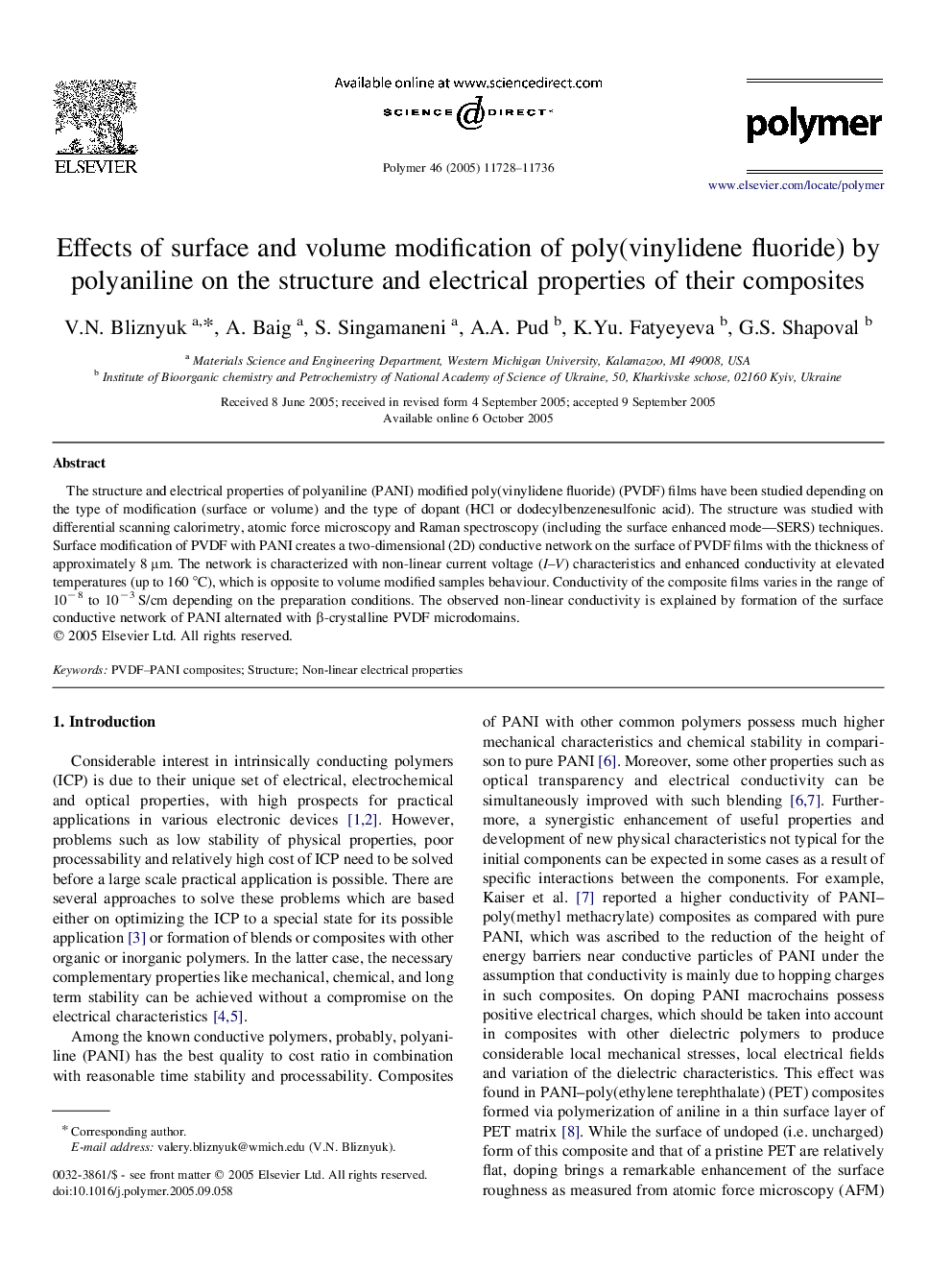| Article ID | Journal | Published Year | Pages | File Type |
|---|---|---|---|---|
| 5187536 | Polymer | 2005 | 9 Pages |
Abstract
The structure and electrical properties of polyaniline (PANI) modified poly(vinylidene fluoride) (PVDF) films have been studied depending on the type of modification (surface or volume) and the type of dopant (HCl or dodecylbenzenesulfonic acid). The structure was studied with differential scanning calorimetry, atomic force microscopy and Raman spectroscopy (including the surface enhanced mode-SERS) techniques. Surface modification of PVDF with PANI creates a two-dimensional (2D) conductive network on the surface of PVDF films with the thickness of approximately 8 μm. The network is characterized with non-linear current voltage (I-V) characteristics and enhanced conductivity at elevated temperatures (up to 160 °C), which is opposite to volume modified samples behaviour. Conductivity of the composite films varies in the range of 10â8 to 10â3 S/cm depending on the preparation conditions. The observed non-linear conductivity is explained by formation of the surface conductive network of PANI alternated with β-crystalline PVDF microdomains.
Keywords
Related Topics
Physical Sciences and Engineering
Chemistry
Organic Chemistry
Authors
V.N. Bliznyuk, A. Baig, S. Singamaneni, A.A. Pud, K.Yu. Fatyeyeva, G.S. Shapoval,
